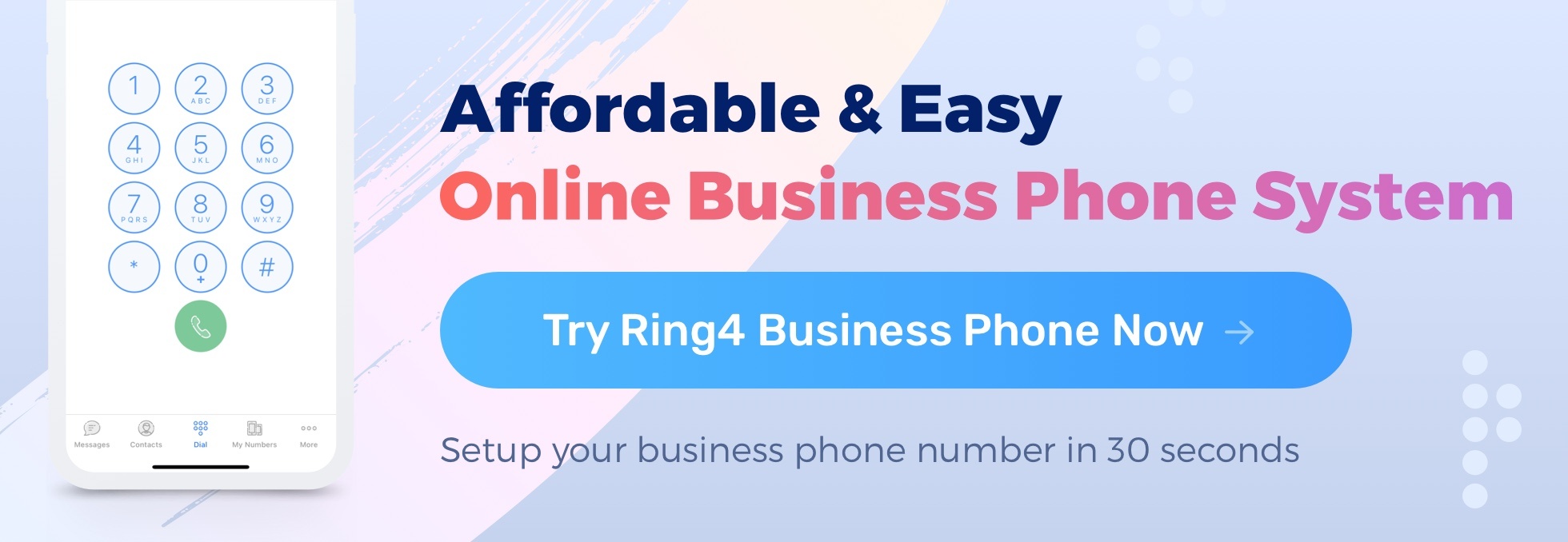VoIP is a critical touchpoint with leads. Here are strategies for generating and qualifying more leads with your VoIP services.
The big trend in modern digital marketing is increasing channels of communication with your customers. VoIP is one of them, and it can be an effective way to provide customer support and generate leads.
Lead generation with VoIP isn’t straightforward, though. It requires an interconnected system of marketing that helps your VoIP shine.
In this article, you’ll learn the best telephone lead generation and qualification techniques.
Generate Qualified Leads with VoIP
Before you can start on lead qualification, you need to generate them. And the quality of leads you generate plays a more prominent role. Here’s how to generate qualified leads with VoIP.
Harnessing the Power of Inbound Calls
The most crucial thing in telephone lead generation is not just to generate as many leads as possible but ones interested in your business and are likely to convert.
What this means is that you keep your ideal customers in mind when designing the marketing materials before the discovery call. One of the best ways to do that is to make leads come to you when they’re interested, a marketing strategy called inbound marketing.
SEO or search engine optimization is the primary method to do that. Here is a brief explanation of getting more qualified SEO leads without outsourcing to an SEO agency.
First, perform keyword research to yield keywords you can focus on. The two large categories of keywords are commercial keywords related to the products and services you provide, as well as information keywords your leads might be searching for.
You can do keyword research with free tools like Google Keyword Planner or Ahrefs alternatives, which provide more data on the keywords. These tools provide insight into how much search traffic different keywords receive, ease of use for optimizing keywords, and exhaustive lists of similar keywords with those metrics.
Then, create content that covers these keywords. Regarding informational keywords, create high-quality SEO blog articles that elucidate the topic. This helps your potential leads and positions your company as an expert. Include information on how your company can help with the topic discussed.
The traffic these pages generate should be converted into callers. The easiest way to do this is by adding a call button either at the bottom of the page or in the top navigation bar, like in the example below.

source: https://avantevet.com/
With enough engaged traffic and visible and clear-to-understand CTA, you’ll get more inbound calls from interested SEO leads. Adding a live chat button or a call-back button will diversify the communication channels.
Leveraging Integrations and Automation
Your next step in creating a lead generation system with VoIP is making the sales representatives’ jobs easier with automation and integrations with the apps you use.
A significant piece of automation is call routing. That’s a process of connecting the caller with the agent who can help them best. Typically, you would set up call routing to communicate with the least busy agent or the most qualified to answer the lead’s question.
In the latter case, predetermine what the lead wants to talk about by providing a list of options to choose from when ordering a callback or by using an interactive voice response for inbound calls. The IVR business phone system asks the caller what they need assistance with and redirects them to the right agent.
To maximize the effectiveness of VoIP for telephone lead generation, integrate VoIP with CRM and marketing automation tools you’re using. Information about the call can then be recorded in these tools together with the lead’s contact data.
Running Effective VoIP Campaigns
Another way to generate more leads with VoIP is paid ad campaigns. Running paid ads in Google search and on multiple social media sites will show the ads to people viewing them only on mobile devices, allowing them to call. This way, your ads translate directly into motivated inbound calls.
To make it more effective, work on targeting the right demographic. Missing the targeting will lead to attracting people who aren’t likely to convert and will waste your agents’ time and advertising budget.
Build an ideal customer profile and narrow down the ad targeting to include only them. Also, consider running a remarketing campaign where you’re marketing to people who have visited your website.
Optimize the ad campaign by measuring its performance. You can do that with call tracking or any other way to measure conversions. Cut out the target demographics and sources that don’t convert and focus on the ones that produce the best results.
Qualify Leads Like a Pro

Source: Unsplash
Once you have a constant stream of VoIP leads, qualify them and place them in the appropriate place in the sales pipeline. Here are three major strategies for doing just that.
Turning Conversations into Insights
Automation and integration with marketing apps are key to turning conversations with leads into conversions of paying customers. This is because your whole team can get insights about the lead from marketing software.
Your team can execute three significant tasks to draw insights from these conversations. Gather the lead’s contact information. Record calls and transcribe them to use for later analysis of both lead insights and training sales agents. Lastly, have your agents write about the interaction in the CRM.
If you have the transcription, use sentiment analysis to understand caller interest and predict how qualified they are.
Call recording and transcriptions can be recorded with Ring4. You can then integrate them in the CRM of your choice with a third-party data integration tool or request a custom integration from the team.
These procedures ensure that no matter who talks to that lead next, the representative knows exactly who they are and what they need. This information can also be used for other marketing methods.
Real-Time Lead Scoring
To qualify more leads, implement a real-time lead scoring system. A lead scoring system records interactions with leads and assigns points based on how likely they are to convert based on these interactions. For instance, it could award 15 points to leads who talked about pricing and a couple of points to leads who spent under only a minute on the phone.
The result is a score that reflects how qualified the lead is and how likely they are to convert. What this does for the lead qualification process is give you a list of leads sorted by priority. By using lead qualification tools, businesses can streamline this scoring process and ensure more accurate prioritization. The leads that have the highest points should be the priority for your sales team and should be given follow-up calls.
Building a Qualified Lead Pipeline
With these two elements, you can start building a qualified lead pipeline. You know how engaged the leads are and what their needs are based on the log of previous conversations.
This lets you segment the list by the stage of the sales funnel the leads are at. With this information, you can direct them to the agents best equipped to handle the leads and nurture them to the next stage of the pipeline.
With the personalized information on the previous interactions with the leads, the agents handling them will also be more prepared to talk to them.
This pipeline shouldn’t be confined to VoIP, though. Include all of your marketing methods to make it more effective. For instance, 54% of consumers want to be contacted via SMS, and after a VoIP interaction, you have their phone number to interact with them via SMS. When you collect more data on your leads and their needs, all of the marketing activities will bring more results.
Keep improving how you use the pipeline, who you assign leads to, and how you talk to them based on the conversion metrics and customer feedback.
Is VoIP the right choice for lead generation?

Source: Pixabay
Before you implement all these strategies, ensure VoIP is the right choice for telephone lead generation.
Even though many businesses have a substantial online presence and lean heavily into digital marketing, telephone conversations are still a part of marketing. 75% of consumers will call your business if they need a fast answer, and 61% prefer calling for customer support questions.
Since your business probably needs to use telephone communication, switching to VoIP from regular phones is a wise choice. VoIP is much cheaper, and it can cost as little as $15 per number per month. It’s even cheaper if you have to take plenty of international calls.
It can also be scaled pretty fast and is more fitting for remote work. Representatives can work from their homes with the proper equipment and access to the Internet.
The only objection you might have against VoIP is security concerns, as calls over the internet might be intercepted and used for malicious purposes. But that can be handled with robust encryption and consumer education on malpractices, like phishing attacks.
Conclusion
VoIP is a great way to generate and qualify leads for any industry. To do that effectively, you’ll need to implement new automation and integration systems in your business.
The pros of implementing them far outweigh the cons, though. Try integrating VoIP into your lead generation process with Ring4 for free for an entire week. Track success metrics and see whether it works for your business.

